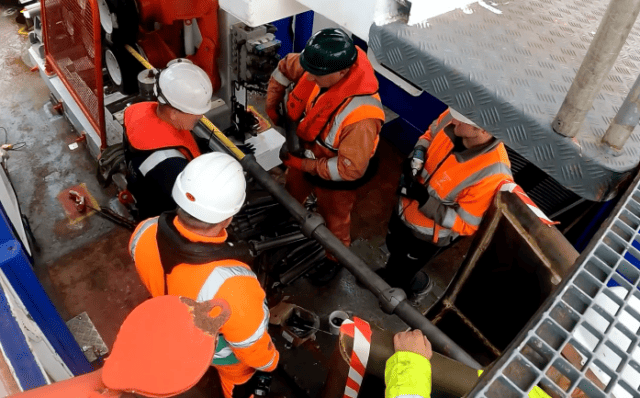The Exhilarating Adventures of Zeus
Zeus, our subsea cable connecting the UK to Europe, was a major part of my life for several years. From the early initiation days in 2019 through to its final splice and test in mid-2022, I was constantly worried because it was so unpredictable.
For example, consultants advised in planning that we had a five percent chance of finding an unexploded WW2 bomb along the route. We didn’t find just one, we found four! Three bombs were within British waters adding months of delay and substantial additional costs to move them out of the way of the route. The other one in Dutch waters. This was far less problematic as the Dutch navy, for national security purposes, stepped in and took care of it within days – much to my relief.
Seabed X-rays suggested we would need to examine 140 hidden objects.We actually ended up having to examine over 350 objects before we could even start laying the cable.
One thing our great oceans never are is predictable. Throw in rough weather, an international pandemic, changing permitting laws, and you start to understand just how far out of my comfort zone I was!
The Customer Need for a New Subsea Hero
One thing we could predict accurately was the demand for a new subsea cable. This was clear from the market trajectory and customer feedback. Customers wanted a super secure route across the North Sea and they wanted it as quickly as humanly possible.
Our existing North Sea cable, called Circe North, was nearing capacity and is also over 20 years old. It was entering the unknown when it came to stability and future workable life. Zayo has always invested heavily in quality network infrastructure to be ready for future demand, so Zeus just had to be done.
Subsea Connectivity Built to Last
One thing we knew from maintaining Circe North for over 20 years is that these waters are heavily fished. Circe North had been impacted multiple times, mostly by illegal fishing. Our fiber is affected when fishermen trawl the bottom of the seabed and inadvertently pull up our cable then cut it to free up their nets and escape before the authorities can track their vessel’s movements.
This meant our main objective in planning wasn’t speed, despite the demand – we wanted to do it right. Quality, security, and sustainability were the priorities. This is why we made sure, at a significant cost, to secure an installation vessel capable of three metres burial depth.
By doing this, we uniquely achieved burying Zeus over two metres where sand waves occur and in many areas achieving two and a half to three metres in depth.
This burial depth is vitally important as the sand on the seabed changes in depth typically by up to two metres in constant tides, this is known as sand waves. This means that only a cable buried over two metres remains covered and safe from the dreaded fishing nets.
We know from our experience in maintaining our Circe North route that anything buried at a depth of less than two metres will become exposed at times.
Even at a burial depth of over three metres, we were still thinking about all of the potential threats. For example, what if an anchor landed on Zeus, potentially causing strike damage? This is why we opted for a double-armoured cable with increased crush resiliency, meaning an anchor bounces off Zeus without impact.
Burying over two metres also has a positive environmental impact, allowing the seabed to reform naturally over the top comprehensively.
An Optimal User Experience Begins Below Sea Level
Most people don’t think about the Internet being under the sea – but they’ll certainly notice if their service is down or the user experience is not what it usually is. If a subsea cable is cut, then everything needs re-routing across longer routes, meaning higher latency and a slower, interrupted and sub-optimal user experience.
Zeus is monitored 24/7 from our UK-based NOC, meaning we see issues or degradation immediately. However, we don’t expect this to ever be an issue for this new cable. In addition, technology is advancing so fast and Zeus is currently being considered by several partners for a super cool advancement using vibrations to monitor illegal fishing and people trafficking.
This type of tech is used on other subsea cables to help predict natural disasters like tsunamis, giving response teams more time to act and prevent a catastrophe. It can also be used by marine biologists to listen to whale songs which they use to ascertain their gender and species.
Problem-solving skills are essential to my team and we pride ourselves on getting the job done.
I had a team of 20 people working on Zeus, plus expert industry consultants. Zeus came in significantly over budget and stretched us in many ways, but we’re all thrilled with the achievement. In my opinion, Zeus is the most secure subsea cable in the world.

